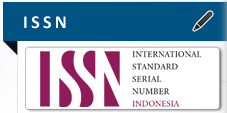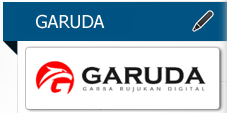Metode G-ALDIT dan G-ALDITLcR untuk Evaluasi Kerentanan Air Tanah Dangkal Akibat Pengaruh Intrusi Air Laut (Studi Kasus: Air Tanah Dangkal Kawasan Pesisir Bagian Utara dan Selatan Kota Makassar)
Abstract
ABSTRAK
Ketidakseimbangan lingkungan seperti kerentanan air tanah terhadap intrusi air laut dapat disebabkan karena eksploitasi air tanah yang berlebihan. Eksploitasi air tanah merupakan konsekuensi logis dari peningkatan jumlah penduduk, khususnya di daerah Pesisir Makassar yang merupakan pesisir yang terletak di kawasan berkembang. Metode GALDIT merupakan salah satu metode untuk mengukur tingkat kerentanan air tanah terhadap intrusi air laut. Modifikasi dan pengembangan GALDIT dilakukan dengan dua tipe yaitu G-ALDIT dan G-ALDITLcR. Modifikasi ini dibuat dengan penyesuaian kondisi lapangan dan pengembangan dilakukan dengan penambahan parameter di antaranya tutupan lahan dan jarak dari muara sungai. Penambahan parameter ini dianggap lebih efektif untuk mewakili kondisi kerentanan air tanah. Metode ini menggabungkan bobot dan rating tingkat kepentingan penilaian faktor untuk menilai zona rawan terhadap intrusi air laut. Penyesuaian bobot pada setiap faktor pengembangan dilakukan dengan metode Perbandingan Berpasangan-Analysis Hierarchy Process (AHP) menggunakan aplikasi Expert Choice 11. Pemetaan akhir kerentanan air tanah dangkal dipetakan dengan analisis overlay menggunakan ArcGIS 10.3. Hasil penilaian kerentanan menggunakan G-ALDIT menunjukkan bahwa zona kerentanan intrusi air laut hanya menunjukkan kerentanan sebesar 10,23%. Setelah menggunakan metode G-ALDITLcR, zona kerentanan tinggi terlihat meningkat menjadi 28,61% dengan menambahkan kriteria tutupan lahan dan jarak dari muara sungai. Dengan pengembangan metode G-ALDITLcR secara lebih jelas dapat menunjukkan daerah yang memiliki tingkat kerentanan yang tinggi sehingga dapat meningkatkan sensitivitas penilaian.
Kata kunci: intrusi air laut, kerentanan air tanah, Analysis Hierarchy Process (AHP), GALDIT
ABSTRACT
Environmental imbalances such as groundwater susceptibility to seawater intrusion can be caused by overexploitation of groundwater. The exploitation of groundwater is a logical consequence of the increasing population, especially in coastal areas of Makassar, which are located in developing areas. GALDIT method is one of the methods to measure the level of vulnerability of groundwater to seawater intrusion. Modification and development of GALDIT is called G-ALDIT and G-ALDITLcR. This modification was made by adjusting field conditions and the development was carried out by adding parameters including land cover and distance from estuary. The addition of this parameter is considered more effective to represent the condition of groundwater vulnerability. This method combines weight and rating of factor assessment importance to assess zones prone to seawater intrusion. Weight adjustment in each development factor is done by Paired Comparison-Analysis Hierarchy Process (AHP) method using Expert Choice 11 application. Final mapping of shallow groundwater vulnerabilities is mapped with overlay analysis using ArcGIS 10.3. The results of vulnerability assessment using G-ALDIT method showed that the vulnerability zone of seawater intrusion shows a vulnerability of 10.23%. After using the G-ALDITLcR method, the high vulnerability zone was seen increasing to 28.61% by adding criteria for land cover and distance from the estuary. The development of the G-ALDITLcR method can more clearly show areas that have a high level of vulnerability that can increase the assessment sensitivity.
Keywords: seawater intrusion, groundwater vulnerability, Analysis Hierarchy Process (AHP), GALDIT
Keywords
Full Text:
PDFDOI: http://dx.doi.org/10.34126/jlbg.v12i2.368
Refbacks
- There are currently no refbacks.

This work is licensed under a Creative Commons Attribution-NonCommercial 4.0 International License.








